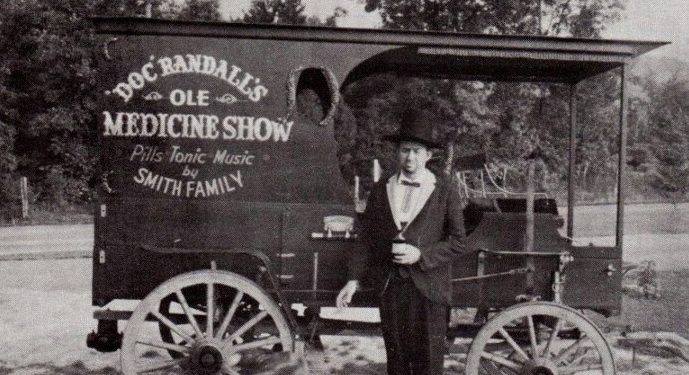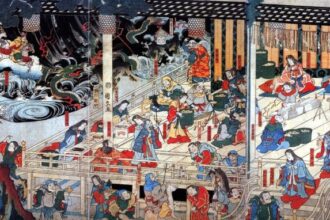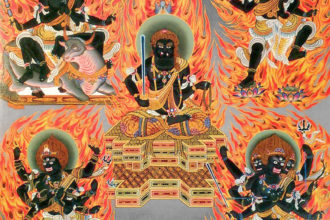Advanced Character Backgrounds

Not all games start at level one. When this happens, the characters are leveled, and maybe, if the GM/ DM is lucky the player might add a sentence or two more to the background to flesh it out more. Unfortunately, these details are often left “on the cutting room floor,” because not everyone wants to craft a unique background for their character, are too busy, or learn about the game at the last minute. Instead of sticking only with the “standard” backgrounds, why not expand them a bit with these ideas?
Fame
Fame represents how well a character is known.
2nd & 3rd Level
The character starts to be known in their hometown or place where they’re starting. At these levels it’s entirely possible to keep a low enough profile.
4th – 7th Level
At these levels it becomes increasingly difficult for characters to be an anonymous face in the crowd. This recognition might even spread to nearby towns. Such characters are able to call in minor favors, but, in return, the character is expected to do a service for a much-reduced fee.
8th – 12th Level
The character is known in a large region or a state, often by sight. Bards may recite tales of their heroics… or villainy! S/he is able to pull in good favors/ get favorable treatment due to their notoriety.
13th – 17th Level
Characters of this level are known nation-wide. People may automatically give the character(s) favorable treatment. They are either reviled by evildoers for their heroic exploits or hated by townsfolk and governments for the problems they bring. If the characters are evil (or at least problematic) governments may hire adventurers to deal with them.
Levels 18+
Your character is known worldwide, perhaps even on a multiplanar level, depending on the plot of the game. Girls (or guys) swoon over you, and may tell untrue tales of their relationship(s) with you.
The Fame Stat
Conversely, you can give a quasi-stat called “fame.” Its starting DC is 10 + ½ character level (rounded down). In order to roll against it, you roll d20 + ½ your character level (rounded down) + charisma modifier +/- misc. modifiers. Miscellaneous factors such as how reasonable or dangerous a request is, what their starting opinion of the character is, and if the character benefits all play a role.
- If the NPC likes the character DC –1 to –3 for the check, depending on the level of like (recognize the character, moderately impressed, majorly impressed)
- Should the NPC dislikes the character, the DC + 1 to +4 for the check (slightly dislike, dislike, moderately dislike, or outright hate)
- If the NPC thinks the task is reasonable DC –1 to –3 for the task (so easy an idiot could do it, zero risk, or it’s not an imposition)
- Character can win “brownie points” with the the NPCs if they did them a favor, the DC goes down by – 1 to – 3 depending on the level of favor.
- If there is a negligible level of risk +0 to +1
- Should there be a moderate level of risk, the DC increases by +2 to +3
- If there’s a high or overwhelming level of risk, the DC rises by +4 or +5
- PCs in remote areas cause the DC increases by anywhere from +2 to +4. The NPC is right in asking “who are you to ask this of me?”
- Also, if the PCs are dealing with intelligent monsters, the DC can vary widely. Some monsters may be willing to surrender or simply not fight because of how famous they are. The monster might feel it’s not worth the risk to face them. On the other hand, other monsters may fight to the death simply because of their fame. They might try to use the PCs death as a means of increasing their own status within their group.
Example
A character at level 15 would roll 1d20 + 7. The base is Dc17 characters are in a remote village where their fame hadn’t spread yet, granting a +2 DC, the PCs get on the nerves of the townsfolk, granting another +2, but they just defeated a monster -2 DC, and the favor they’re asking is only a minor inconvenience -1 DC, bringing the total to a DC of 18.
Exploits
Exploits are what fame is connected to. For instance, they may be known for killing a specific monster, guarding a caravan against bandits, or finding the lost treasure of Nod. At higher levels, exploit might be saving the kingdom from a dragon, quelling planar conflict, or saving the world.
2nd & 3rd Level
The character is known for 1 – 3 specific exploits, usually minor in scope. Few people outside the town may know of them.
4th – 7th Level
The character is known for 4 – 6 specific exploits. At least one of these exploits may be recognized regionally. The
8th – 12th Level
The character is known for 7 – 10 specific exploits. Half of them are known regionally. Perhaps one or 2 are known at a nationwide level.
13th – 17th Level
the character is known for 11 – 14 specific exploits. Half of these exploits are known at a nationwide level. Up to one quarter may be known at a global level.
Levels 18+
The character is known for 16+ feats. Tales of their exploits are known on a global scale. Some may be even known in some interplanar communities.
D12 exploits
- Saving a town from a disaster
- Fire
- Flood
- Mud or Rock slide
- Overthrowing or eliminating a corrupt law enforcement or governmental body
- Protecting the town from monsters or an invading army
- Solving a long-standing mystery
- Removing a curse
- Saving an important government official
- Rescuing a lost person, pet, etc.
- Clearing a nearby dungeon
- Discovering a treasure
- Traveling to the planes
- Fighting a BBEG (this is different than your run-of-the-mill monster)
- Roll twice and combine
Advancing and Removing Character Exploits
A character’s exploits level can exceed their actual character level. For every 6 points of a challenge DC a character or group of characters meet, the higher their exploits level. However, for every 6 months a character is not doing anything exciting, intriguing, or interesting, remove 1 level of exploits until their exploits return to their current level. Also, the more remote, out of the way a character is, the less likely that anyone would have heard of them. For this reason, PCs may encounter a once famous adventurer who decided that he wanted to fade into obscurity.
Conclusion
These are just a few ideas on how to tackle advanced-leveled player backgrounds. If you like these ideas, please feel free to like and reshare. Should you end up using any of these ideas, please let me know in the comments below to let me know how it turned out. Look out for part 2 soon!



